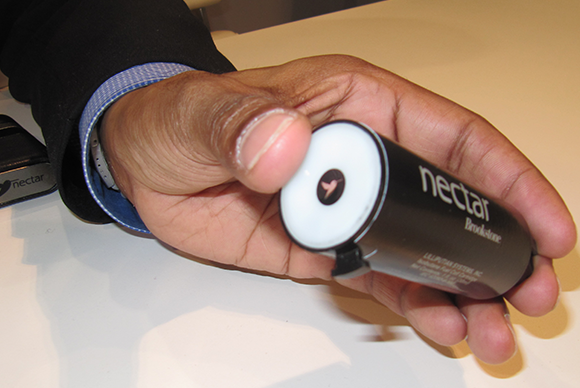Mobile batteries: Everything you need to know
Most modern mobile devices use lithium ion (sometimes called Li-ion) batteries, which consist of two main parts: a pair of electrodes and the electrolyte between them. The materials that these electrodes are made of varies (they can be lithium, graphite, or even nanowires), but they all rely on the chemistry of lithium. It's a reactive metal, which means that it has a tendency to combine with other elements. Pure lithium is so reactive, it can catch fire in the air, so most batteries use a safer form called lithium cobalt oxide. Between the two electrodes is the electrolyte, which is usually a liquid organic solvent that allows electrons to flow between them. When a lithium ion battery is charged, the lithium cobalt oxide molecules capture and hold electrons, which they then release when the battery is in use, such as when it is running your cell phone.
 Nick Mediati
Nick MediatiAll of this chemistry means one thing: Your device's battery is storing energy, and the chemicals inside are eager to release that energy any way they can. And that can be a problem, as Boeing recently found out when the batteries on a 787 Dreamliner caught fire while the plane was parked.
This is one of the drawbacks of lithium ion: If the batteries are discharged too far, the chemistry breaks down and creates an excess of lithium oxide, which ignites, creating more lithium oxide, and so on. That's what chemists call a thermal runaway reaction, and what everyone else calls a fire, which is why the FAA grounded the 787. Since the same thing can happen if you puncture the battery, the TSA recommends that air passengers carefully pack batteries in their carry-on baggage, not in checked baggage.
Battery capacity
The capacity of a battery is measured in milliampere-hours (or mAh), which indicates how much energy the battery can deliver over time. For instance, if a battery has a rating of 1000 mAh, it could deliver 1000 milliamps of power for 1 hour. If your device uses 500 milliamps of power, the battery should last about 2 hours.The battery life of a device is a bit more complicated than that, though, as the amount of power a device uses changes depending on what it is doing. If the device's screen is on, the radio is transmitting, and the processor is working hard, it will use more energy than if the screen is off and the radio and processor are idle.
That's why you should treat battery-life claims with caution—the manufacturer can extend the battery-life number by turning the screen brightness down, or by turning off parts of the device. If you are curious, you can use an app that monitors the power consumption and battery status of your mobile device, such as Battery Monitor Widget for Android or Battery Life Pro for iOS devices.
Controlling the flow of power

To show how this process works, we charged a Samsung Galaxy Note and measured the flow of power into the device, against the reported percentage for the battery charge. As you can see in the chart above, the flow of power into the battery is highest when the battery is first being charged, and then tapers off. The last few portions of the charge take a long time, as the controller slows the flow of power to a trickle so that the battery won’t be charged too much.
The future of power
Battery technology is always improving, with labs around the world looking for new battery technologies to replace lithium as well as new approaches to building lithium ion batteries. Among the new technologies, a lot of work has gone into supercapacitors, in which the battery stores energy electrically and then releases it, like a flash gun. Supercapacitors could allow for much quicker charging, as little chemical change is involved, but current supercapacitors can deliver power only in short bursts, which is the opposite of what most mobile devices need. Fuel cells that use hydrogen to generate electricity are also coming soon. The Nectar fuel-cell system, announced at the CES trade show in January, uses a $10 cartridge to power a cell phone for up to two weeks. However, fuel cells are not yet small enough to fit inside a phone—the Nectar system charges the existing lithium ion battery and doesn't replace it.

No comments:
Post a Comment